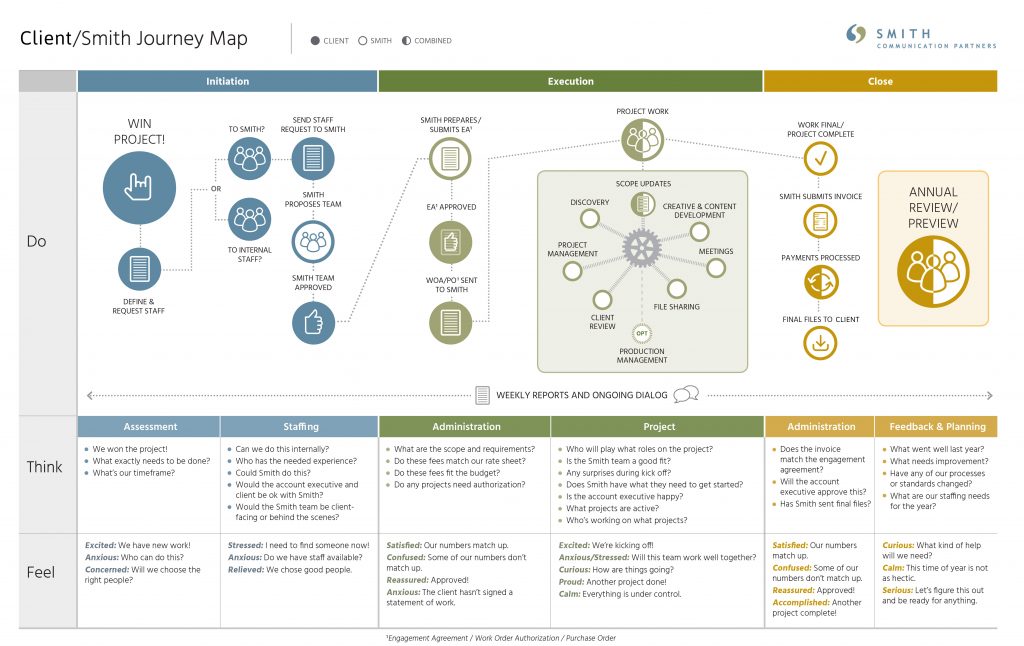So, What’s Work Like Now?
I once asked a graphic designer how to draw people.
She suggested I work on my personality.
This little joke highlights the false beliefs of two characters. What I wanted help with was quite different than what the designer thought I needed help with.
This same kind of disconnect can happen when you’re writing content and communications for your employees. You make assumptions about what you think the audience needs, and you create the content based on those assumptions. But, if your organization had to shift suddenly this year in response to the pandemic and lockdowns, your previous assumptions about your employees might need a reboot.
To create good content and communications, you should try to see the world as the audience sees it. It can help to know their goals, their feelings and what they’re experiencing at that moment. Psychologists refer to this as having a theory of mind.
To create good content and communications, you should try to see the world as the audience sees it. It can help to know their goals, their feelings and what they’re experiencing at that moment.
Journey mapping is one technique for getting inside your audience’s head and understanding their needs based on what work is like for them now.
Understand Your Audience’s Journey
We aren’t born knowing others have desires, beliefs and knowledge different from our own. We learn this as children and it deteriorates with age. When it comes to writing content and communications, we have the additional challenge of forming a theory of mind for many different people who might be arriving at a similar point in a journey from different paths and with different objectives.
A journey map is a visualization of the process that an employee goes through to accomplish a goal. It’s used for understanding and addressing the employee’s needs and pain points.
A journey map might start as a simple checklist. But, depending on the process, a list might not be enough. You might need to augment your list with additional detail, including any people, tools or other information the employee might need or come in contact with along their way to achieving their goal.
The resulting map should be thought of as a living document, a snapshot you review occasionally to hunt down pain points and make improvements. Having a journey mapped can also help you assess the impact of proposed process changes.
Here’s a journey map we created at Smith to help us manage one of our larger partnerships. (We can’t share the name of this client on our website, so we’ve scrubbed out some of the detail.) This map started out as a simple to-do list 10 years ago. But, as the number of projects, processes and people involved grew, we needed a 30,000-foot view so we could delegate tasks, develop training and find efficiencies. A map like this might help you improve a variety of processes, such as performance management, annual enrollment, onboarding and more.

Let’s Connect
Do you use journey maps? Share your story with us. If you’d like some help creating employee content and communications, we’d love to hear from you.
